Sea buckthorn oil is pressed from the ripe berries and seeds of the sea buckthorn shrub, a hardy salt-tolerant, drought-tolerant shrub that puts all its survival energy into the berries.
And this is one of those generous plants that gives us two different oils!
Oil is produced from both the fruit pulp and from the seeds within the fruit. Sometimes a producer will mash up the fruit and the seed to create one oil that has a mix of fatty acids from both. Increasingly, however, I am finding suppliers who make the distinction between these two oils.
And they are quite different when we look at the fatty acid profile!
Sea Buckthorn Berry Oil
Sea buckthorn fruit oil is pressed from the berry or fruit, much like olive oil is produced. It is a rich orange-gold color and high in antioxidants including vitamin E and A. It is also high in palmitoleic acid, which makes up 34% of its fatty acid profile.
Sea buckthorn Seed Oil
Sea buckthorn seed oil, pressed from the seeds inside the fruit is quite a different oil.
It is high in Linoleic Acid and Linolenic Acid with only a small percentage of Palmitoleic acid (2%). Pure sea buckthorn seed oil is much more closely related to oils like cranberry seed oil than they are to the sea buckthorn oil pressed from the berries.
You can often tell by the color as well.
Below is the seed oil and the berry oil side by side. The berry oil is much higher in pigments than the seed oil.
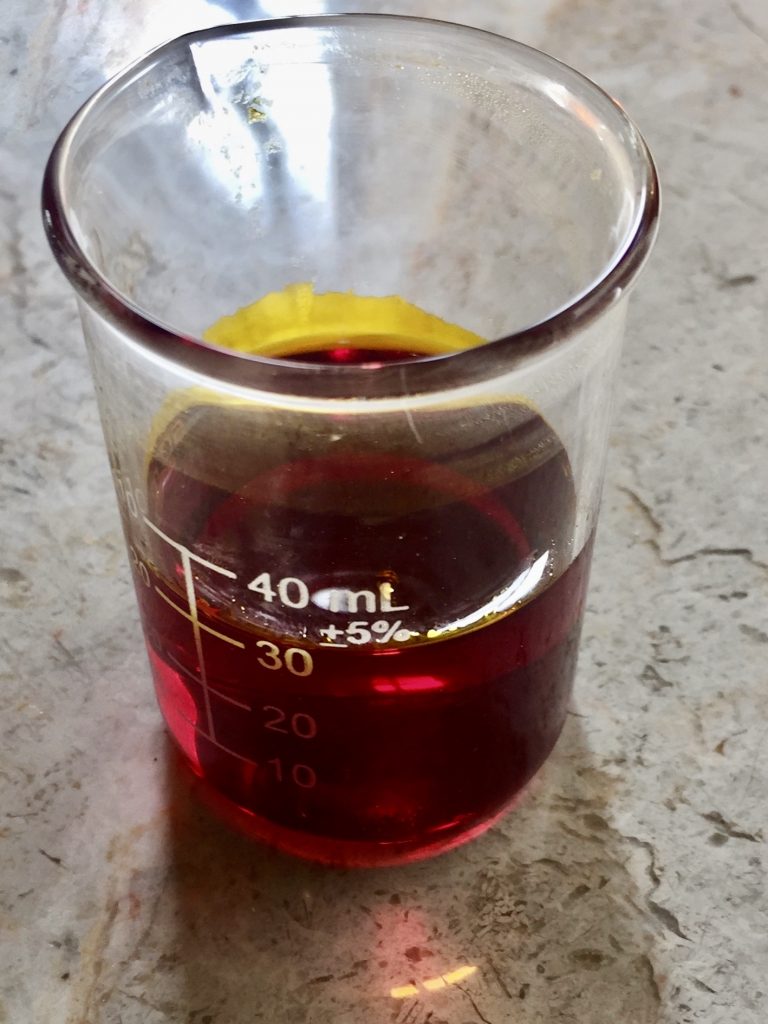
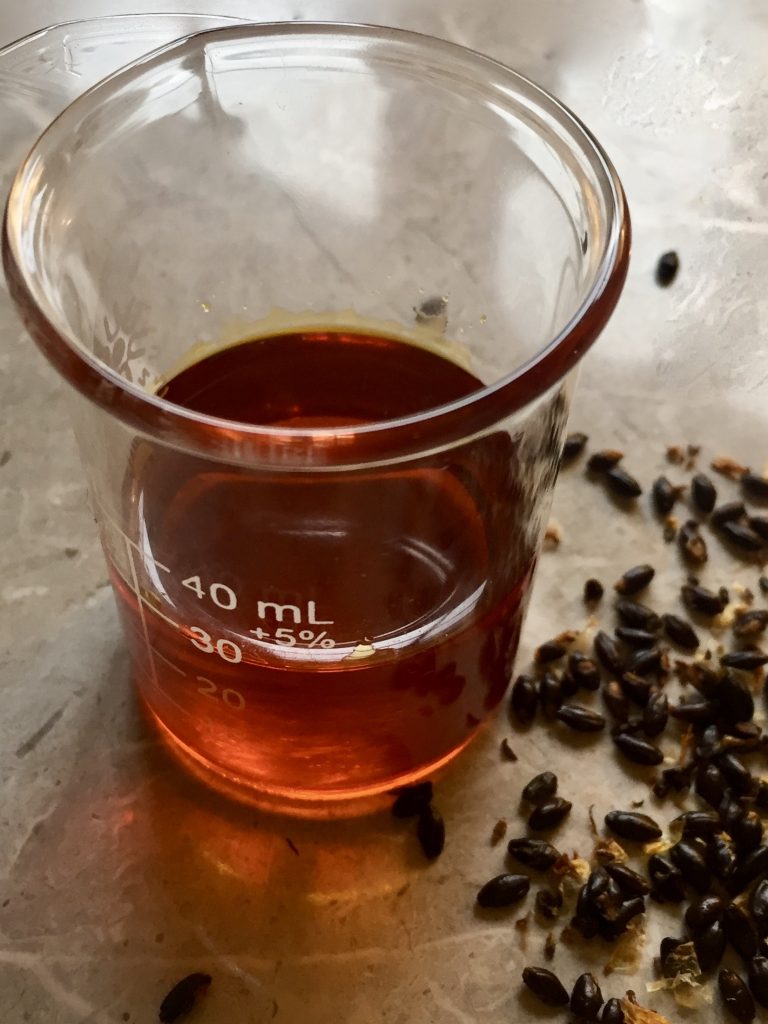
Both oils are wonderful! And combined they make a powerful skincare formula so it is not a case of better or worse, just different in how you use them.
Asking for a fatty acid profile for your oils is a good way to see what you are getting.
Palmitoleic Acid and Skin Aging
Palmitoleic acid is usually found in trace amounts in oils, typically making up 1% or less. So to find a single source in sea buckthorn berry oil that has such high amounts of this fatty acid is unique!
And important. The skin is made up of 20% palmitoleic acid.
But as the skin ages, the production of palmitoleic acid diminishes, which contributes to the appearance of fine lines and skin aging.
Replenishing the skin with this important fatty acid topically is a good way to supplement the skin as it ages.
Fatty Acid Profiles for Each Oil
Here are the fatty acid profiles for both sea buckthorn seed oil and berry oil. Notice how strikingly different they are. The seed oil is high in linolenic acid (LNA) and linoleic acid (LA). These are two essential fatty acids or EFA’s, the same Essential Fatty Acids found in flaxseed oil and fish oil supplements. Sea buckthorn berry oil is much lower in LNA and LA, but significantly higher in Palmitoleic acid.
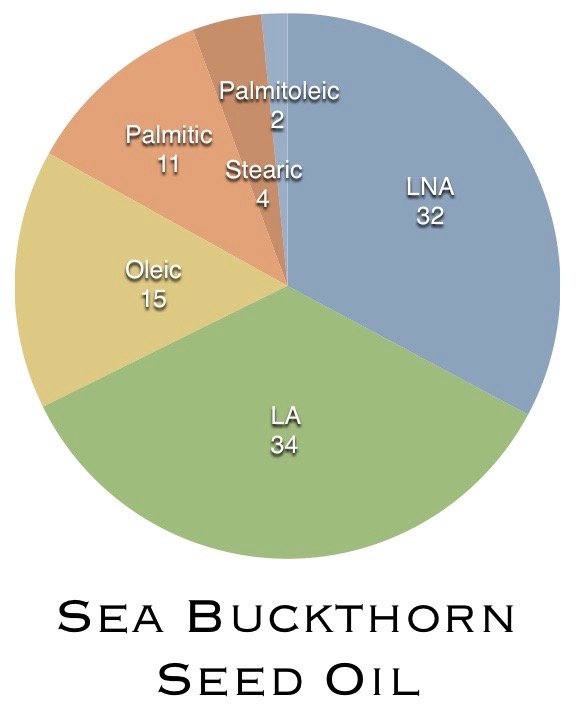
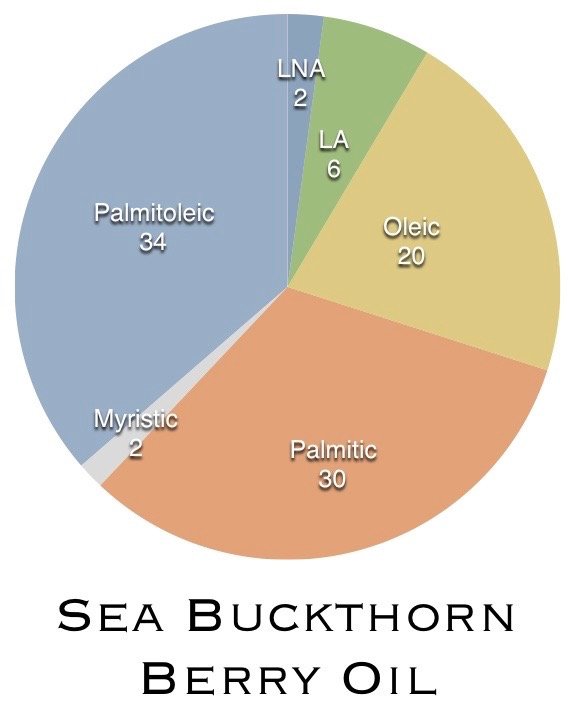
Finding palmitoleic acid at 1 to 2% is much more common in lipid oils. The high percentage of this important fatty acid in the berry oil makes sea buckthorn berry oil a powerful addition to serums and facial oils for mature skin.
Using Sea Buckthorn Oil in Formulas
The high concentration of plant compounds in sea buckthorn berry oil makes it dark orange in color. Used alone, it will temporarily stain your skin, and permanently stain your clothes and other fabrics.
For that reason, this oil is best used in a combination with other oils. It is a wonderful addition to facial oils but you can use it in body oils and body care as well.
There is no set recommendation for how much to use but to temper the rich pigment, I suggest adding it to your facial oils a few drops at a time until you find a ratio that feels right to you.
Sea buckthorn seed oil you can use more generously in your skincare formulas as it typically contains less of the strong plant pigments.
Have you worked with sea buckthorn oil in either form? Share your experiences in the comments below.


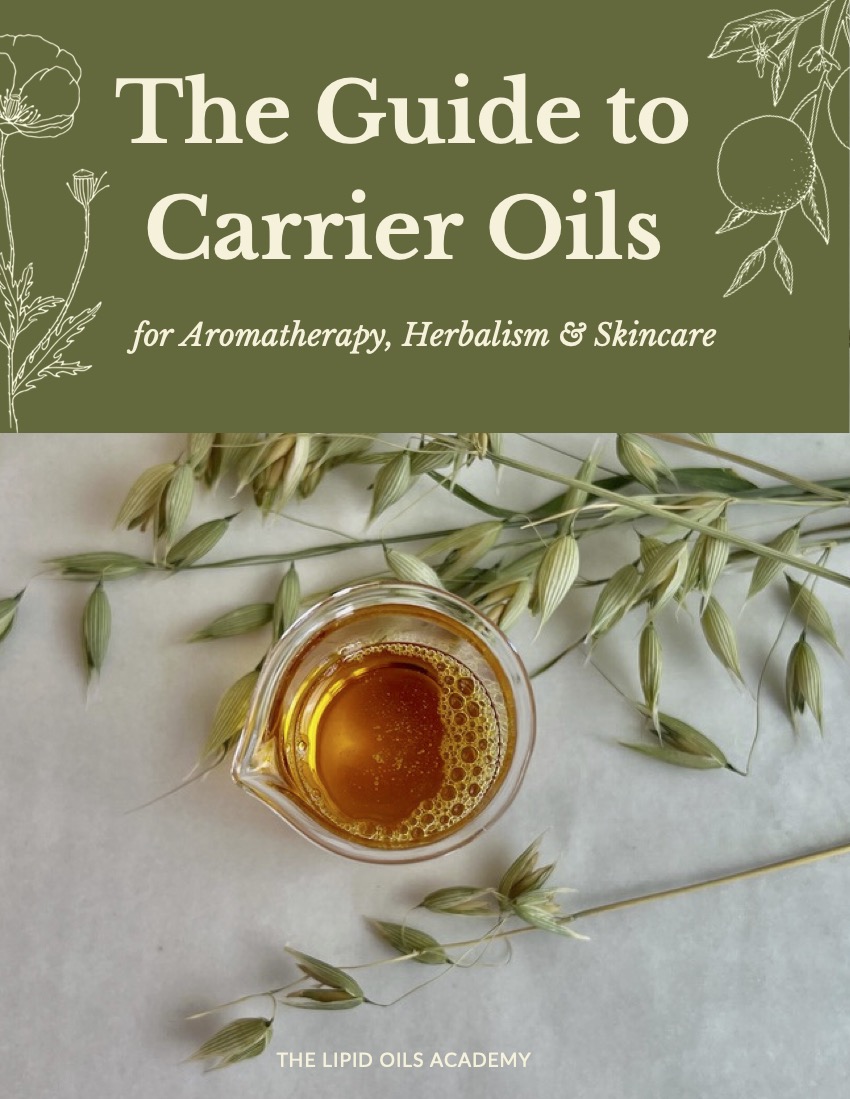
An easy-to-understand article about sea buckthorn fruit oil and seed oil, the main differenece between the two is Omega 7 and carotenoids, and sea buckthorn berries contain a lot of good staff.
Great article!
I love Sea Buckthorn Berry Fruit oil for facial serum. I haven’t worked with the seed oil, but it looks like it would be a great oil to take orally for the EFA’s.
Do you take a tablespoon or 2 daily, or do you feel that Hemp seed oil and Flax Seed are better for this?
Sly
Sly, I’ve never seen it food grade but to be honest never looked. If you had access to some it would be great nutrition – the berries are used for jams and other food recipes in norther Europe and it is VERY high in vitamin C!